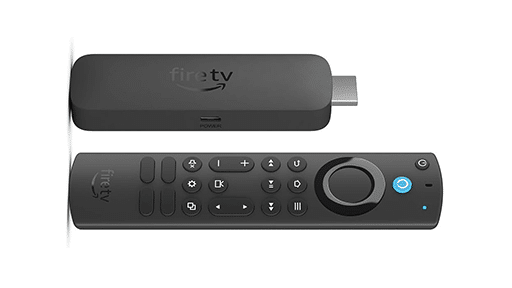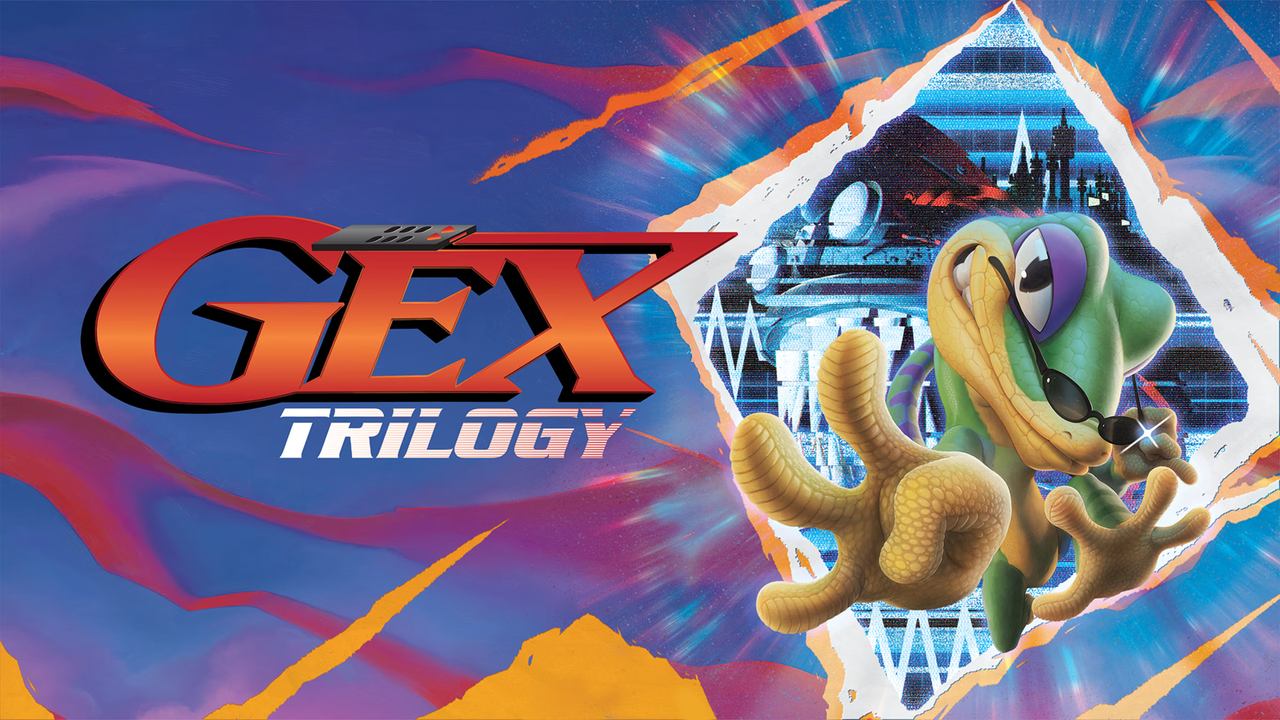
Gex Trilogy brings back a mascot many haven’t seen in decades. Developed by Crystal Dynamics and re-released by Limited Run Games, this collection includes Gex, Gex: Enter the Gecko, and Gex 3: Deep Cover Gecko. All three games come bundled with modern features like widescreen support, save-anywhere options, and a rewind function.
Each game offers a slightly different take on platforming, moving from 2D to 3D across the series. While some of the gameplay may feel stuck in the past, there’s no denying how distinct the series remains. Gex never reached the same level of fame as Sonic or Mario, but he left a mark with his constant one-liners, weird settings, and TV-inspired level themes.
I played the original Gex on 3DO and still remember how strange and fun it felt at the time. I played Enter the Gecko on N64 and Deep Cover Gecko on PlayStation. Even after revisiting all three in this new collection, the first game remains my favourite. There’s something about its level design and pacing that stuck with me more than the sequels.
Let’s take a closer look at what Gex Trilogy brings to modern consoles and how each game holds up today.
Flipping Channels with a Gecko
Each game in Gex Trilogy leans hard into its television-inspired theme. Gex starts off as a lazy couch potato obsessed with TV until he’s sucked into the Media Dimension by a villain named Rez. It’s a basic setup, but it works. Gex jumps from channel to channel, landing in levels inspired by horror flicks, cartoons, and kung fu movies.
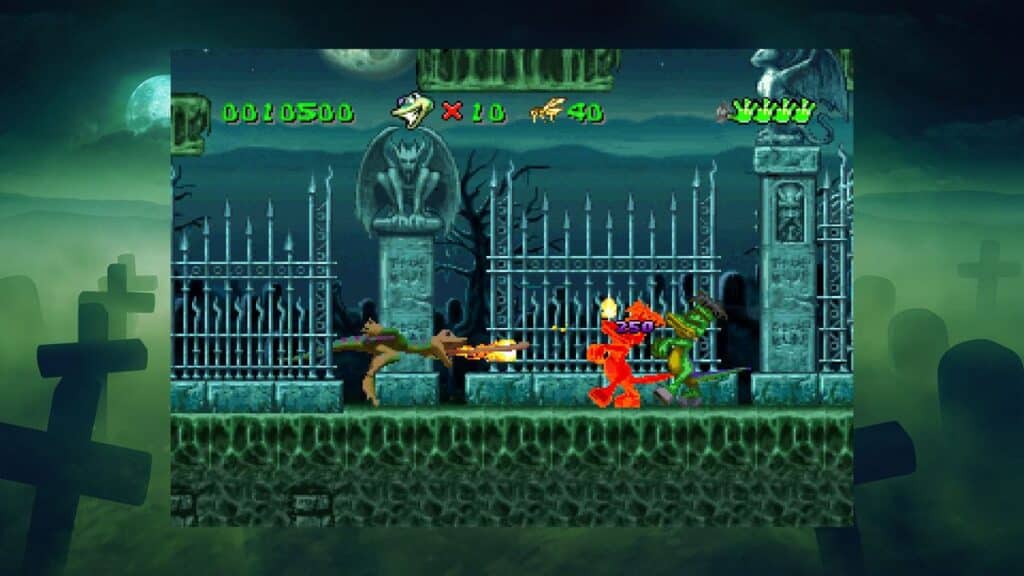
The second game, Enter the Gecko, sticks with the same villain but shifts to full 3D. The story takes itself a bit less seriously this time, with Gex returning as a reluctant hero recruited by the government. The third game goes even bigger.
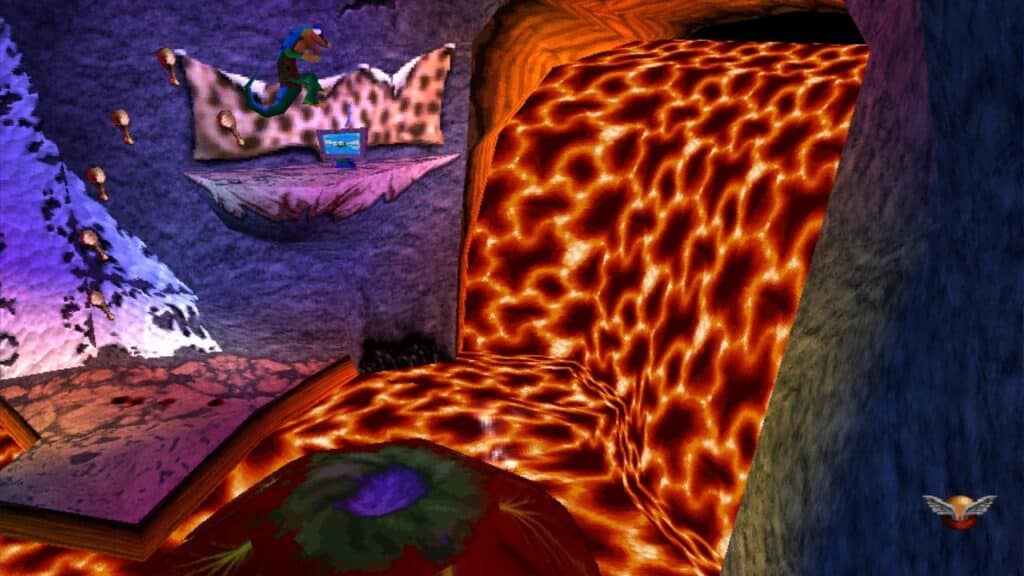
Deep Cover Gecko turns Gex into a parody of James Bond, complete with a kidnapped agent and a mission to save the world from Rez, again.
Gex’s personality stays consistent throughout the trilogy. He’s loud, sarcastic, and never stops talking. Dana Gould’s voice work delivers nonstop references and punchlines. Some are clever, but many feel dated or just strange now. You’ll hear shout-outs to everything from The X-Files to Gilligan’s Island. By the time you reach the third game, the innuendos ramp up, and not always in a way that lands.
Revisiting these games, I remembered how much the tone changes from one game to the next. The first game feels more grounded, with just enough weirdness to keep things fun. The sequels start throwing jokes at you non-stop, and it can get tiring. Some lines made me laugh out loud. Others had me groaning.
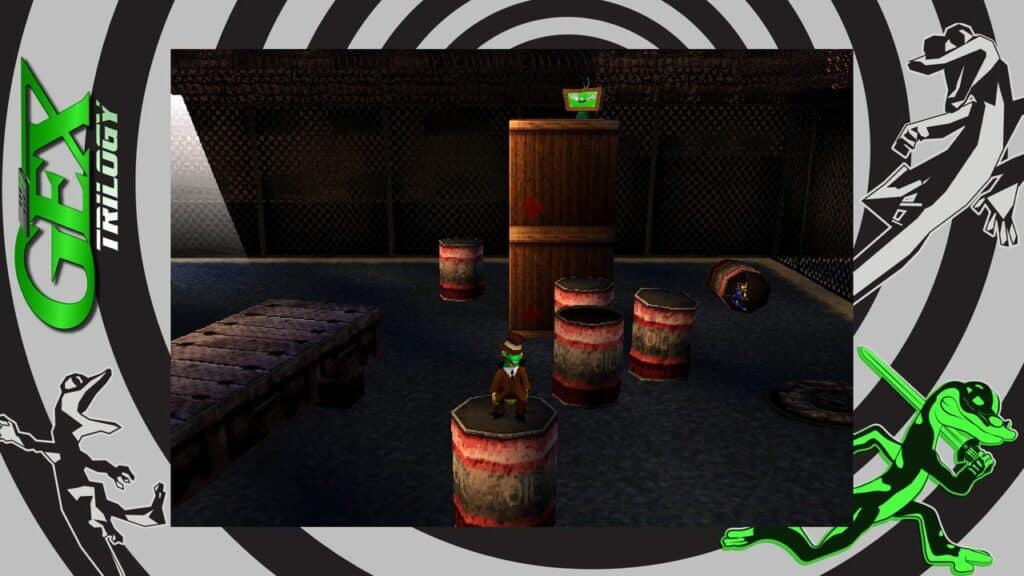
TV Land Isn’t for Tourists
The Gex Trilogy covers a surprising range of platforming styles. The first game is a 2D side-scroller packed with branching paths, vertical layouts, and hidden collectibles. You’ll explore themed worlds like haunted graveyards and samurai movie sets, all while looking for a remote to finish the level.
Gex’s tail swipe, tongue grab, and wall-crawling give the platforming a twist. He can climb walls and ceilings freely, which adds some interesting puzzle-like movement. It also causes the occasional mix-up. I’d often try to bounce off a wall only to stick to it by accident, especially in tight spots.
The sequels move to 3D, with Enter the Gecko borrowing ideas from Super Mario 64. You collect red remotes tied to level objectives, but you’re kicked back to the hub after each one. That structure gets repetitive fast, especially since you have to replay each level several times. Still, the game mixes things up. One level might have you chasing down enemies, while another has you hunting for hidden switches.
Deep Cover Gecko builds on the second game with more vehicle sections and side characters, but the core loop stays the same. The rewind and save-anywhere features help a lot. Some jumps and enemies would’ve been way more annoying without them.
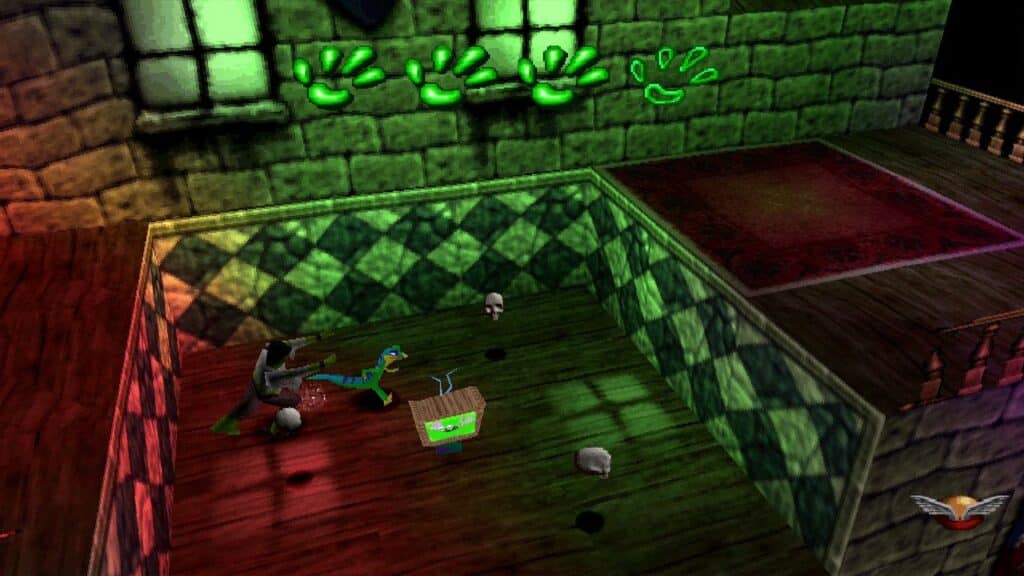
Flashes of Static and Sarcasm
The Gex Trilogy keeps the original look and feel mostly intact. Each game runs smoothly, with widescreen support for the two 3D titles and a few filter options for the 2D original. You can toggle borders, screen effects, and scanlines to recreate that old-school CRT vibe. It’s not essential, but it helps sell the nostalgia. I played all three games with the CRT filter on. Honestly, I think it looks better that way.
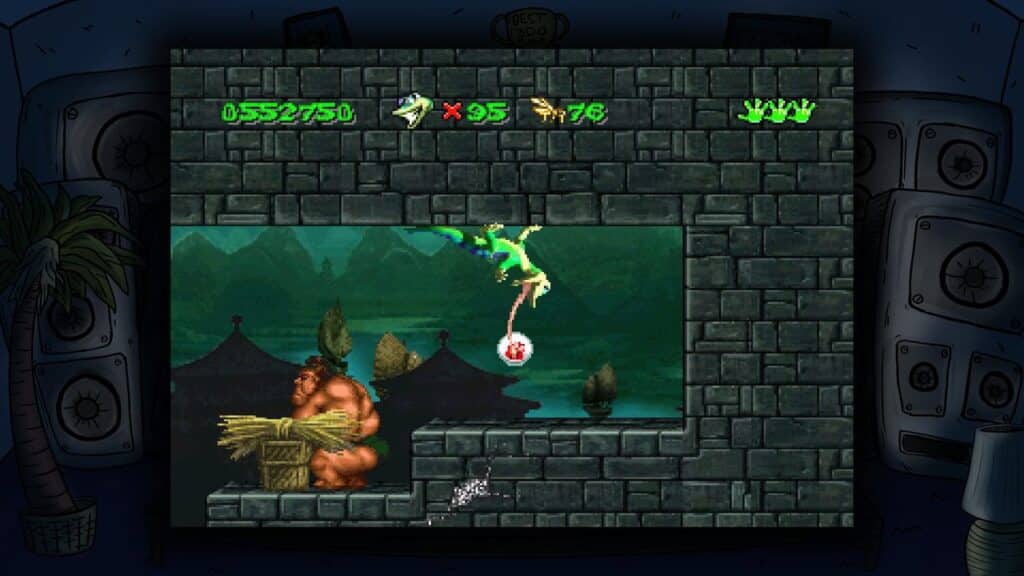
The added resolution makes a difference, especially in Enter the Gecko and Deep Cover Gecko. Textures still look blocky, but the increased clarity helps when you’re lining up jumps or spotting collectibles. Analog control also feels better than it did back in the day, even if the camera still struggles at times. Tight corners and indoor areas tend to make it worse.
Menus are clean and easy to use. The in-game overlay lets you save, rewind, or tweak display settings quickly. Everything’s straightforward, with no clutter.
The audio sticks close to the original as well. Music loops cleanly, though it’s pretty basic. Sound effects get the job done, but it’s really Gex’s voice that stands out. Dana Gould brings the same rapid-fire delivery across all three games, tossing out jokes, references, and insults constantly. Some are still funny. Others just feel weird or outdated now. Still, hearing those lines again made me laugh more than once. There’s something oddly comforting about that mix of sarcasm, static, and strange channel-hopping worlds.
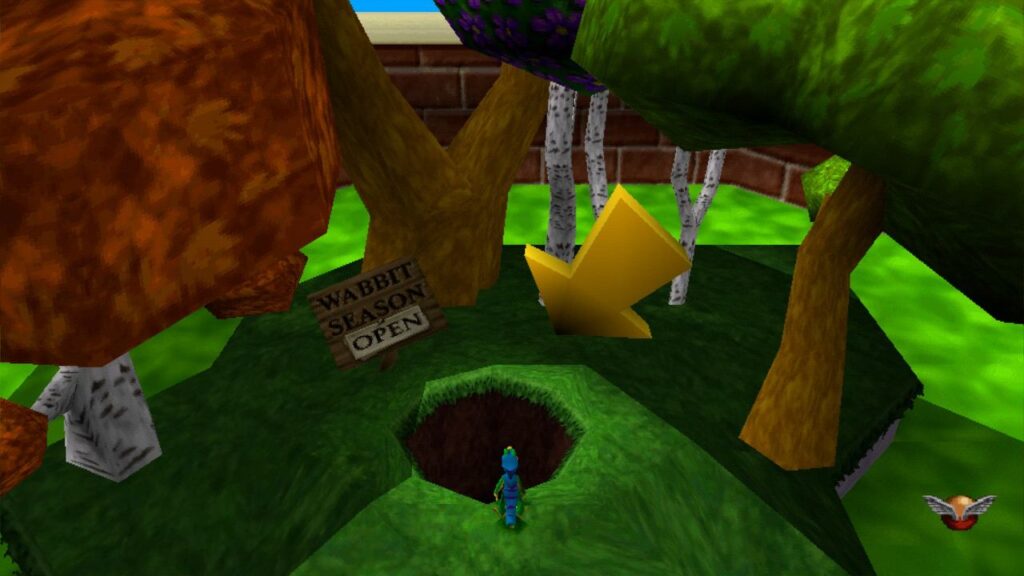
Gex Trilogy Stays True to Its Strange TV Roots
Gex Trilogy doesn’t try to modernize its mascot. It sticks to what worked in the ’90s, for better or worse. The updated controls, widescreen support, and rewind system make each game easier to revisit, but they don’t fix everything. Some levels drag, the camera fights back, and the humour doesn’t always land. Still, it sticks to what made these games weird and fun in the first place.
The first game, Gex, remains my personal favourite. It’s simple but creative, and I found myself smiling more there than in the sequels. That might be because I played it back on 3DO, or maybe it just fits Gex’s weird personality best. The 3D games add more objectives and features, but they also feel more uneven. Even so, I had fun replaying them.
The bonus material is where Gex Trilogy goes beyond most retro collections. Old ads, concept art, and developer interviews offer something to dig into between levels. It’s not just a repackaged set of games. It’s a small museum of one of the oddest mascots to come out of the ’90s.
This isn’t the kind of remaster that wins over new fans. But if you remember renting these games or quoting Gex lines with friends, there’s something here worth revisiting.
Gex Trilogy

Summary
Gex Trilogy brings back a cult platforming mascot with three TV-themed adventures and just enough modern tweaks to make them playable. From the 2D original to its two 3D sequels, each game keeps Gex’s sarcastic style intact, even when the humor doesn’t always hold up. The rewind feature, widescreen support, and bonus content add value without changing the core experience. Some camera issues and dated design show their age, but fans of the series will find a lot to appreciate.
As always, remember to follow us on our social media platforms (e.g., Threads, X (Twitter), Bluesky, YouTube, and Facebook) to stay up-to-date with the latest news. This website contains affiliate links. We may receive a commission when you click on these links and make a purchase, at no extra cost to you. We are an independent site, and the opinions expressed here are our own.




